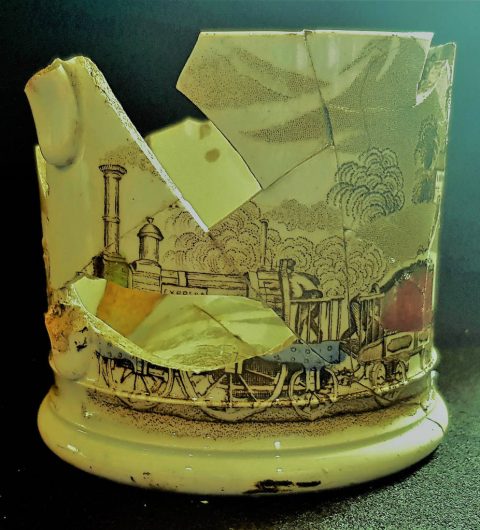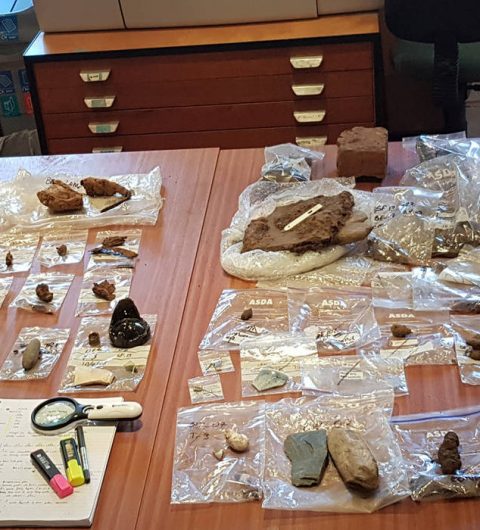Digging Deep to ‘Reveal’ the Trust’s Archaeological Treasures
While my colleagues in Project Reveal enjoy the splendour of Trust properties, whether they’re the fine interior collections of a grand castle or a beautifully preserved weaver’s cottage, I am, for the time being, confined to the basement.* But fear not, I am perfectly at home among the boxes of artefacts with many archaeological treasures connecting us to Scotland’s past, just waiting to be discovered again!

Reveal Railway Cup
My name is Natasha Ferguson and I am the Project Reveal Lead Inventory Officer working with the archaeology collections currently held by the National Trust for Scotland. Through my specialism in material culture research and experience of the Treasure Trove system in Scotland I have worked with a wide range of archaeological material – from Bronze Age weapons to medieval coin hoards and large assemblages of 18th-century musket balls fired during the Battle of Culloden.

Ben Lomond Reveal Excavation
Getting to grips with the diversity of the Trust’s archaeology collections is therefore a challenge I’m looking forward to. Trust archaeologists are responsible for the conservation and management of thousands of archaeological sites scattered across Scotland. Archaeological fieldwork, such as excavation or fieldwalking, is important to actively research these sites so we can understand them better and to inform future approaches to conservation, as well as enhancing the visitor experience. Sometimes excavation is also necessary to manage change at Trust properties, such as installing a new water pipe or carrying out building repairs. This can be a great opportunity to make new discoveries, especially if a place has a long and complex history. Fieldwork often generates a significant volume of archaeological material, which needs to be sorted, analysed and conserved so that it may be available for future research and potential public display.

Reveal Axe Head
Therefore one of my primary roles within Project Reveal is to work through these archaeological assemblages, ensuring they are sorted, archived and researched to a consistently high standard. Some assemblages may require reporting through the Treasure Trove system, which means they may be allocated to a museum collection outside the Trust. However, this can result in an important contribution to a local museum and an opportunity for collaboration.
Another interesting aspect of this project is highlighting the archaeological objects held at individual properties. These artefacts may have been collected by previous owners of properties as antiquarian curiosities discovered on their land over many generations. Alternatively, they could be more recent finds made by Trust staff or even members of the public while visiting. These may include prehistoric stone tools such as flint blades or ground stone axeheads, medieval coins, or even sherds of post-medieval decorated pottery. My job will be to track down these artefacts and make sure they are accurately recorded and, if necessary, reported to Treasure Trove. Please do get in touch if you think you have found an archaeological object on a Trust property. Who knows what exciting discoveries may be revealed in the months to come!
*For the sake of clarity, I should note it is the basement of Greenbank House, which does have windows and lovely views of the surrounding garden!
Project Reveal
This article is by Natasha Ferguson. Project Reveal is a multi-site digitization project of unprecedented scale. It will result in an updated database with high quality images and unique object numbers for every item in the Trust material culture collections. With your support, we can help the Trust manage its collections more effectively. Most important, we can help the Trust discover, better understand, and share its treasures with the world.
Please help us to secure this major investment in preserving Scotland’s heritage with a tax-deductible donation in support of Project Reveal.

